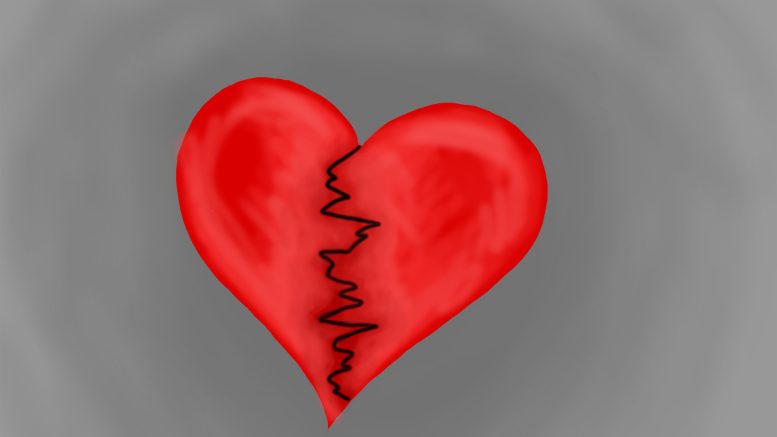The term “broken heart” has been used to refer to the intense sadness that follows rejection and loss for hundreds of years.
In a more literal sense, “broken heart syndrome” is a heart condition that is usually caused by extreme physical or emotional stress.
The condition was first described in Japan, where it was named “takotsubo cardiomyopathy.” It is named after the altered shape of the heart’s left ventricle, which resembles a traditional Japanese octopus trap.
The condition is also often known as “stress cardiomyopathy.”
After experiencing some sort of stressor, patients with this condition suffer weakness in the heart muscles.
The triggers preceding stress cardiomyopathy are diverse. They can be purely physical, such as a recent major surgery or serious injury.
One case of stress cardiomyopathy was caused by excessive consumption of wasabi.
Triggers can also be emotional, such as the loss of a loved one or a heated argument. Even seemingly positive emotions such as surprise can cause the condition.
However, a literature review of cases found that emotional stressors only accounted for 26 per cent of 250 cases examined. In half of all instances, a physical stressor was identified as the cause.
In fact, as many as seven per cent of cases were not preceded by an identifiable physical or emotional stressor at all.
The mechanisms behind stress cardiomyopathy are not well-understood either. Stress hormones such as adrenaline may be the cause of the heart damage.
Excess adrenaline caused by sudden stress can narrow the heart’s blood vessels, which temporarily decreases blood flow to the heart.
Another potential effect of adrenaline is that it can bind directly to the heart’s cells. This causes a wave of calcium to enter the cells, which can disrupt the heart’s ability to pump blood.
Estrogen, which is thought to protect the heart against the negative effects of adrenaline, might also play a part in the condition’s pathology.
This may explain why the majority of patients are post-menopausal women, whose estrogen levels decline over time. In the aforementioned review of cases, females accounted for 87.5 per cent of stress cardiomyopathy patients.
The risk of developing the disease increases fivefold after age 55. The group most diagnosed with the condition are people between the ages of 60 and 69.
The symptoms of stress cardiomyopathy can resemble those of a heart attack. This includes chest pain and shortness of breath.
The symptoms can also be similar to other cardiovascular conditions such as acute pericarditis — inflammation of the fluid-filled pouch surrounding the heart — or a pulmonary embolism, a blood clot in the lungs.
The main difference between the stress cardiomyopathy and a heart attack is that heart attacks typically involve the partial or total blockage of a coronary artery.
On the other hand, stress cardiomyopathy patients usually have healthy coronary arteries.
This means that the conditions can be distinguished using a coronary angiogram, which observes the blood vessels to check if they are blocked.
Although the syndrome may be distressing, the majority of stress cardiomyopathy patients survive without long-term damage to the heart muscle. Some patients — about five per cent — may experience the condition more than once.
The expected outcome is generally predicted to be worse for patients who had physical rather than emotional triggers.
However, death from the syndrome is relatively rare.
April Stempien-Otero, a cardiologist at the University of Washington Medical Center, explained in an informational video that emotional events can have a direct effect on our heart health.
She said she is often moved by seeing her patients realize how much emotions can affect people physically.
“It’s just a real, I think, moment for people of recognizing that heart-mind connection and what it can really do to us,” she explained.


